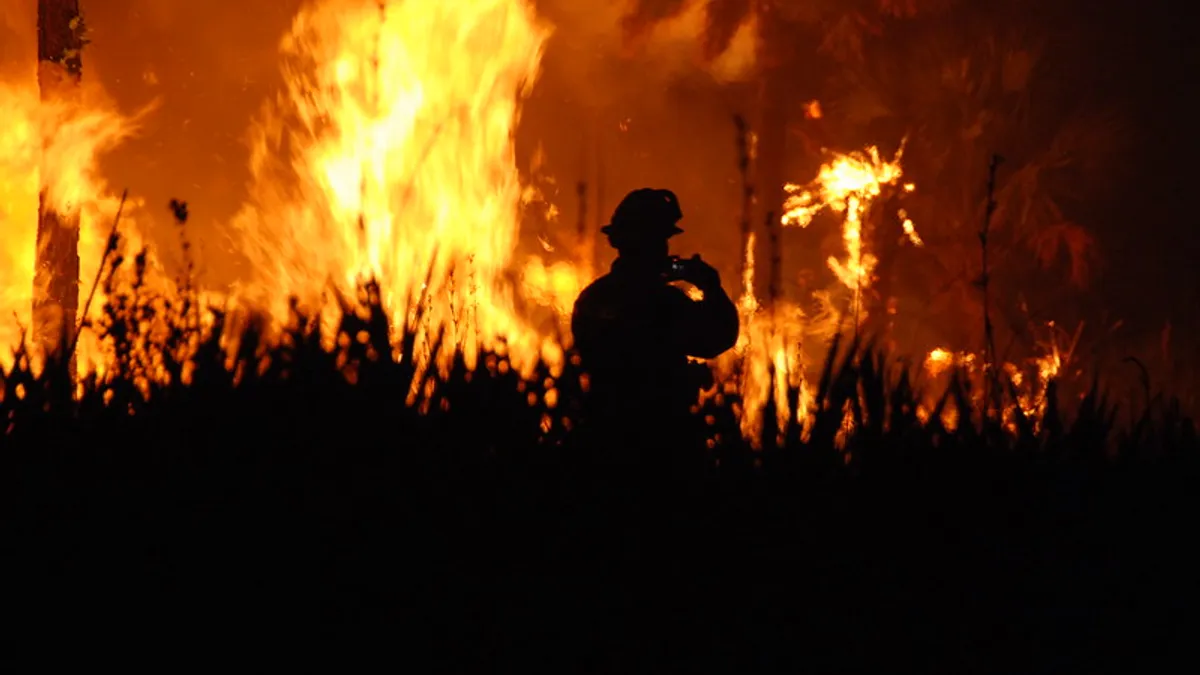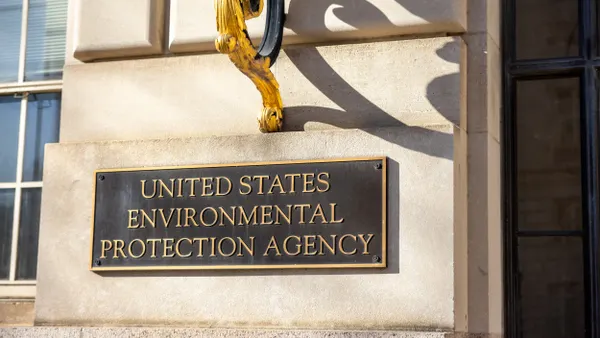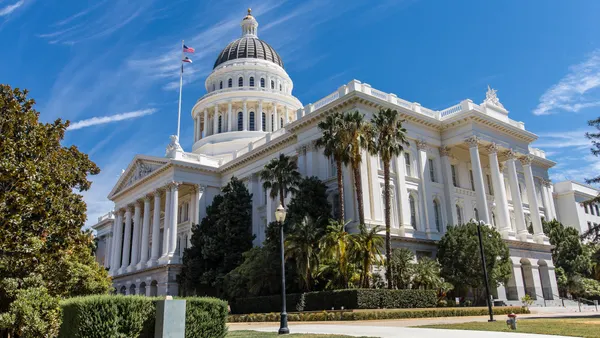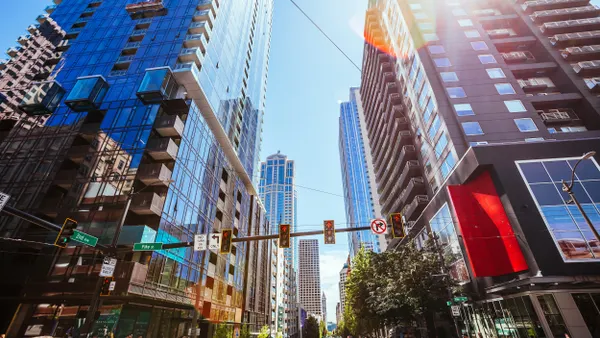Dive Brief:
- Migration to wildfire-prone U.S. cities continues to rise despite an estimated 9.3 million acres of land that are expected to burn in the U.S. annually by 2050, according to new research by ClimateCheck.
- Over half of the 20 areas most at-risk for wildfires have increasing populations, while six of those areas are among the top 15% of the fastest-growing counties in the U.S. The study was conducted by ClimateCheck economists and data scientists, combining "hundreds of data sources from the government and academia to provide individual ratings for every home" to create an overall risk rating for an assessment of climate hazards five to 40 years from now.
- Placer County, an area northwest of Sacramento, CA, is tied for the top spot of highest wildfire risk in the country, and is expected to see 28,498 acres burn annually by 2050. Despite those projections, the local population has grown 7% in recent years and is among the top 15% of the most rapidly growing counties. Counties within the Greater Salt Lake, UT-area are also among those with growing populations despite a high wildfire risk, with populations in the Weber, Morgan and Salt Lake counties increasing 6%, 17.5% and 7% respectively in recent years. The three counties are anticipated to burn over 55,000 acres each year by 2050, according to ClimateCheck.
Dive Insight:
The study comes as the U.S. has struggled with a record-breaking year for wildfires, burning over 8.7 million acres throughout the U.S. to date. When asked why people continue to move into wildfire-prone areas despite the risks, ClimateCheck economic advisor Skylar Olsen said affordability is a key factor.
"We’re being forced to build in more places that are riskier because that’s where we can, and that’s what’s affordable," she said.
Housing affordability has become progressively worse over the past decade, according to Olsen. Millennials are reaching home-buying ages — adding pressure to housing markets — at the same time that many Baby Boomers are retiring. Those factors are pushing people "further and further out" from urban cores because that’s where the affordable homes or available land to build homes are located, according to Olsen.
And although many of those vulnerable areas have growing populations, she said the potential future inability to secure homeowner’s insurance or a mortgage on a property in these areas could start deterring individuals from moving there.
The study also comes as the pandemic has exacerbated the challenges of wildfires. Local governments have been forced to pivot and ask residents to stay home this year for shelter from the smoke given the risk of spreading the novel coronavirus (COVID-19). A number of local leaders have proposed different actions to help mitigate future wildfires, like a $4 billion proposal from Oregon Gov. Kate Brown to take actions to reduce wildfire fuel via tactics like ecosystem restoration projects and prescribed burning.
"Prudent zoning measures and strategic property and forest management, are a must as climate change will continue to bring more serious wildfire seasons to the Western U.S. more often," Olsen said in a statement.











